Exercise 1.5
Painting in the round
The method for the exercise is to dispense with the canvas and allow the object that I am interested in to become the ‘canvas’ I work on.
To prepare for the work I have to make at least 3 large objects. The exercise suggests that before I begin to paint, I should look at certain research points to help me consider my approach and aims.
Jessica Stockholder
This artist is interested in painting the surface which she sees as filled with illusionistic opportunity. Materiality stayed important in her work which became very much like an installation, acknowledging the wall as a surface she works against. This is also seen in her work outside, trees or ground surfaces will be considered. The work is theatrical as that of Phyllida Barlow, a thing of itself, but also woven into the landscape. She is described as part of a generation of artists who have broken down the boundaries between painting, sculpture, and architecture to create a new perceptual space. She makes use of found objects ranging from oranges to neon tubes, discarded household fabrics, and decontextualized building materials. I read about her more architectonic installations which are referred to as recalling Kurt Schwitters; Dadaist collages, spliced with the formal concerns of 1950s abstract painting and redefined through a postmodern sensibility. She sees other people in the found objects – their ideas are embedded in the stuff she uses. I like the idea of continuing these thoughts when one works with found objects.
“I use material as a place to make fiction, fantasy, and illusion. When this happens, attention is drawn to something abstract and separate from the material—the physical paint and canvas.“
(https://www.artspace.com/magazine/interviews_features/qa/there-are-no-words-for-what-im-going-to-do-an-interview-with-jessica-stockholder-55484)
In the Youtube video, the artist explains that colour:
- is ephemeral and embodied
- it requires light to carry it to our eyes
- acts like a skin on the objects, when she uses to paint.
- colour can permeate the whole thing
- paint has qualities, mat, glossy, gesture, as well as materials and she uses them both in the same way
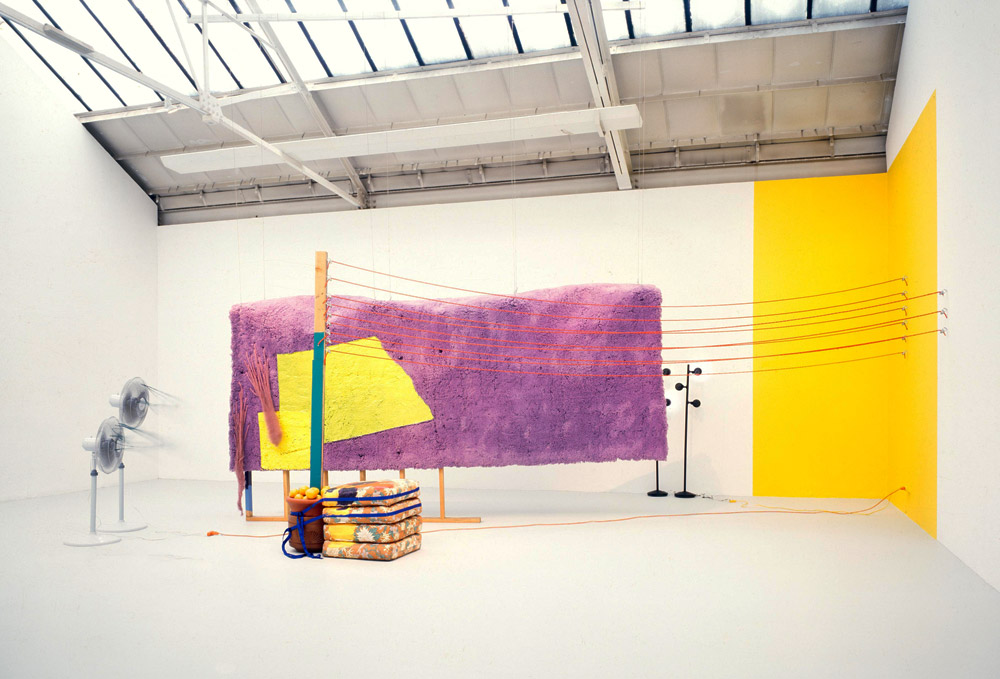
Phyllida Barlow
By now I have read and looked at the work of Phyllida Barlow. I am interested in how she looked in her work almost to defy gravity, and use change to attribute to this and interrogated some of the most fundamental aspects of sculpture, namely its physical attributes, and its presence in space. I wonder if I should try to work bigger…..challenged myself more. I am also considering ideas I have read earlier in UVC 2 around failure, learning to fail, and not looking for results, but understanding this process of becoming. I found a great video conversation with Phyllida Barlow and she refers to this issue – she feels strongly about an open-ended searching and learning process in making. I like to think of what I have been producing up to now in this course, was about learning about (observing, recording, exploring, reflecting, collecting, combining, and constructing) and that it is not so much about the judgment of the objects. I learnt that she does not work with an armature. I almost feel I am in agreement with Phyllida Barlow that this learning is more about offering clues and learning towards a process that could have the potential to make a shift in my own experience. I think about the materials I could use, I even go as far as thinking about casting these objects or developing them more, as bigger objects that could hang or be stacked onto each other.
I am more aware of drawing and sculpting as being in a partnership whilst working, as ideas can be developed as you make and explore the materials as well as possible compositions.
From listening to more talks with Phyllida Barlow I feel I came to understand how the image of sculpture constantly gets lost or dissolved, as you move around it as well as think to experience it in its space where it is placed at that moment. There is something elusive in her work ….and it made me think of space becoming the thing which inhabits the artist in the making process, something she really experience in her making, and which I feel I also could have in small amounts, whilst exploring the objects and materials I am working with. Her work is much about looking up and looking down onto the sculptures, being underneath the work, as well as being high and out of reach, not necessarily an experience of viewing at eye level, as most paintings would be hung.
Preparing
On my working table are styrofoam blocks which I pasted together to make 3d objects for my gestural mark-making exercise. I will attempt to make a series of bigger marks by using these objects and going bigger. I want to use polystyrene to create taller structures and create curves, (‘drawing lines’) around them with soft material. I did drawings and consider painting them. In the making, I used materials I have from packaging and as I built these structures, the polystyrene blocks were randomly assembled. I also see this as a ready-made material that I repurposed and is still changing as I am working on the piece. I also feel that I need to connect with these objects in the making and open myself to randomness as well as try to manipulate the materials. I look at the objects as I make them, I see something clumsy, non-logic, ugly, and awkward. I prefer working on my own…I need to understand what I am making. I tend to read about other artists who make objects…..am I doing art, am I playing, am I learning? The exercise asks that I consider a few points and reflect on these: the size of objects, surface, space, and connecting and constructing ( add painting). At this moment in the making, I consider drawing and using soft materials to work with, almost as if they are as malleable as the forms I am trying to make.
In the images below these forms can be seen, together with seedpods I connected with bongo putty…. I want to create something sculptural and big with these. The next images show the progression of this idea as I started connecting the tall pods and adding other found items, like the skull of a Hoopoe bird, woodshavings, wood and feathers, the clay became the connecting medium that hold everything in place.
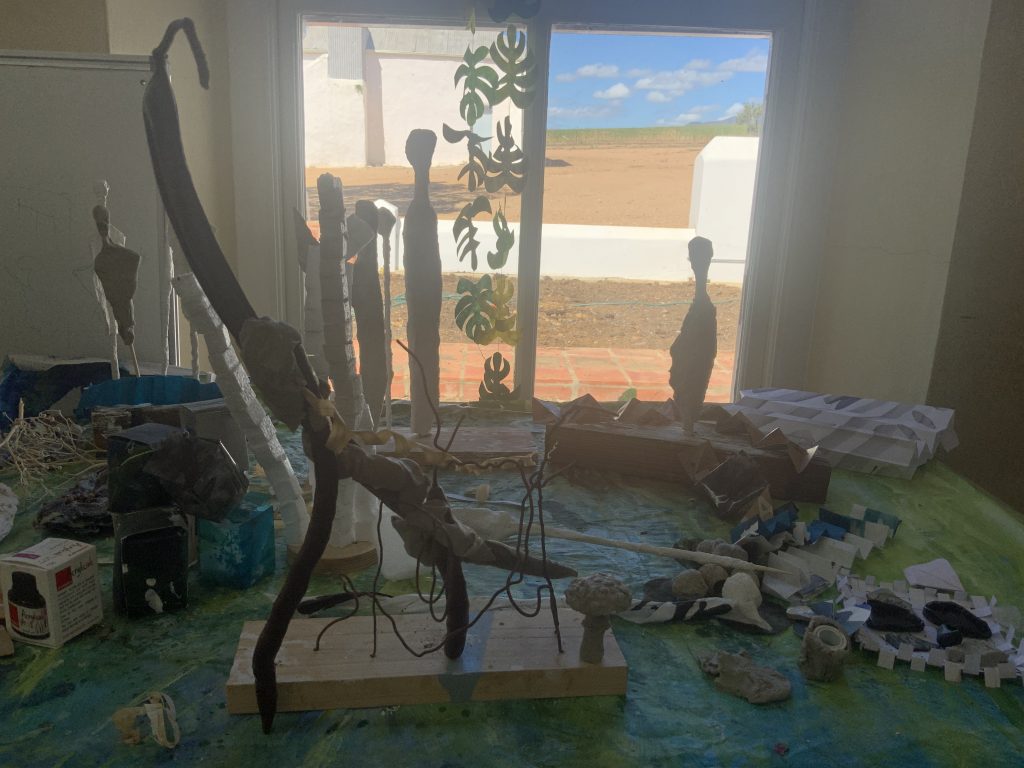
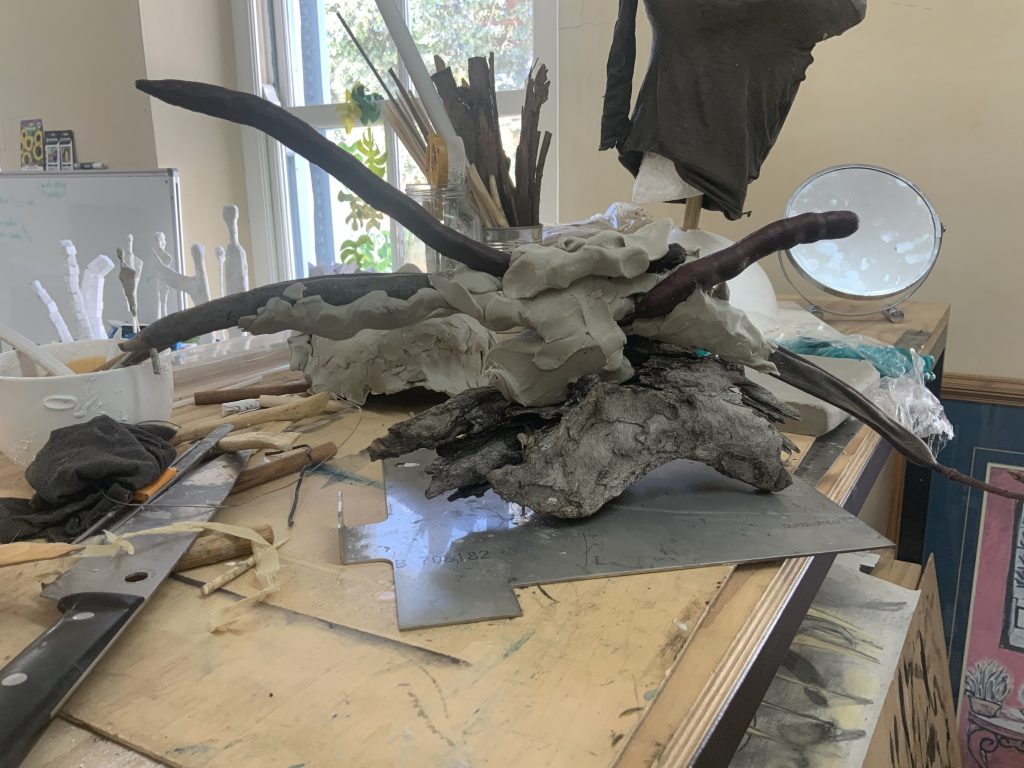
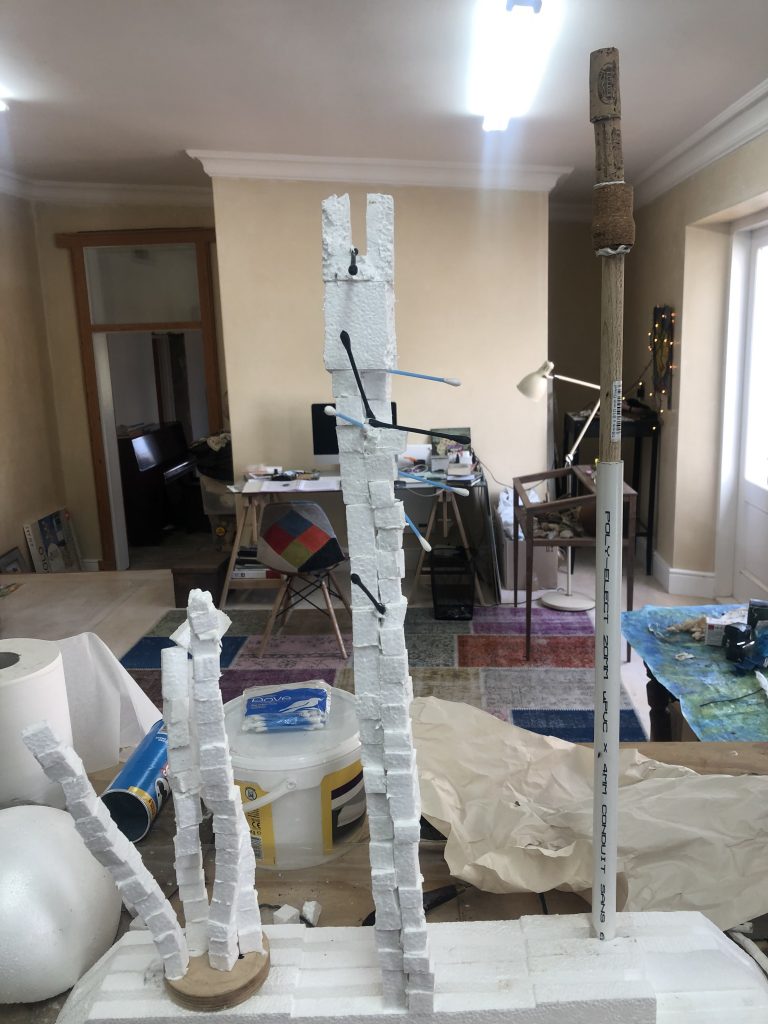
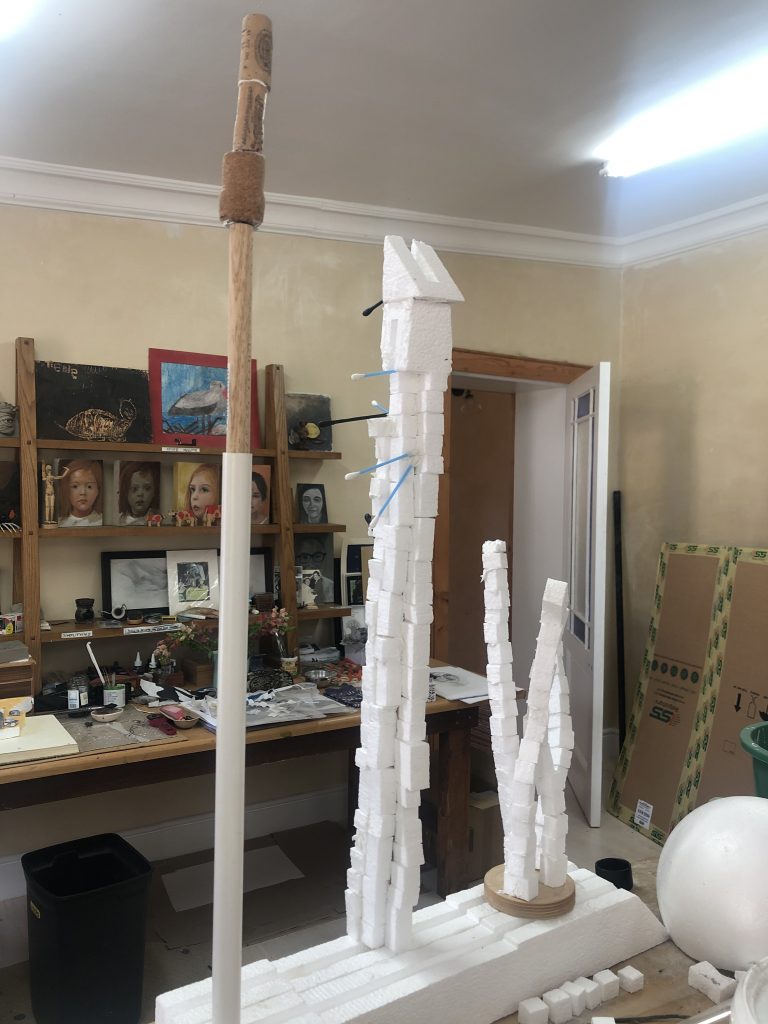


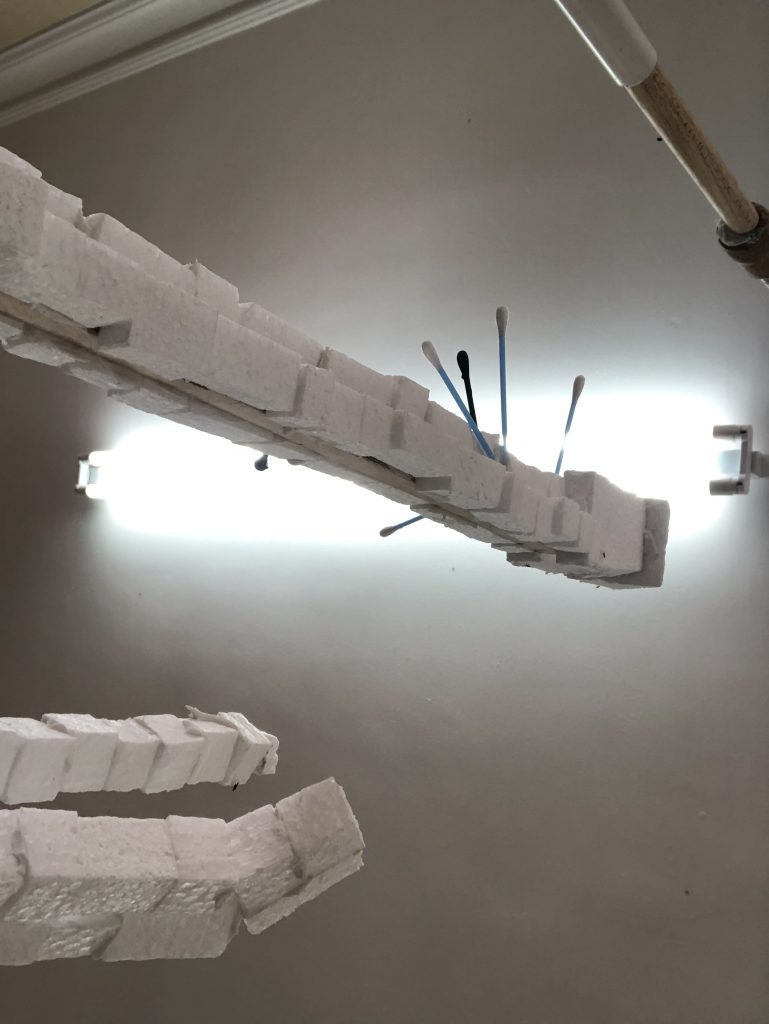
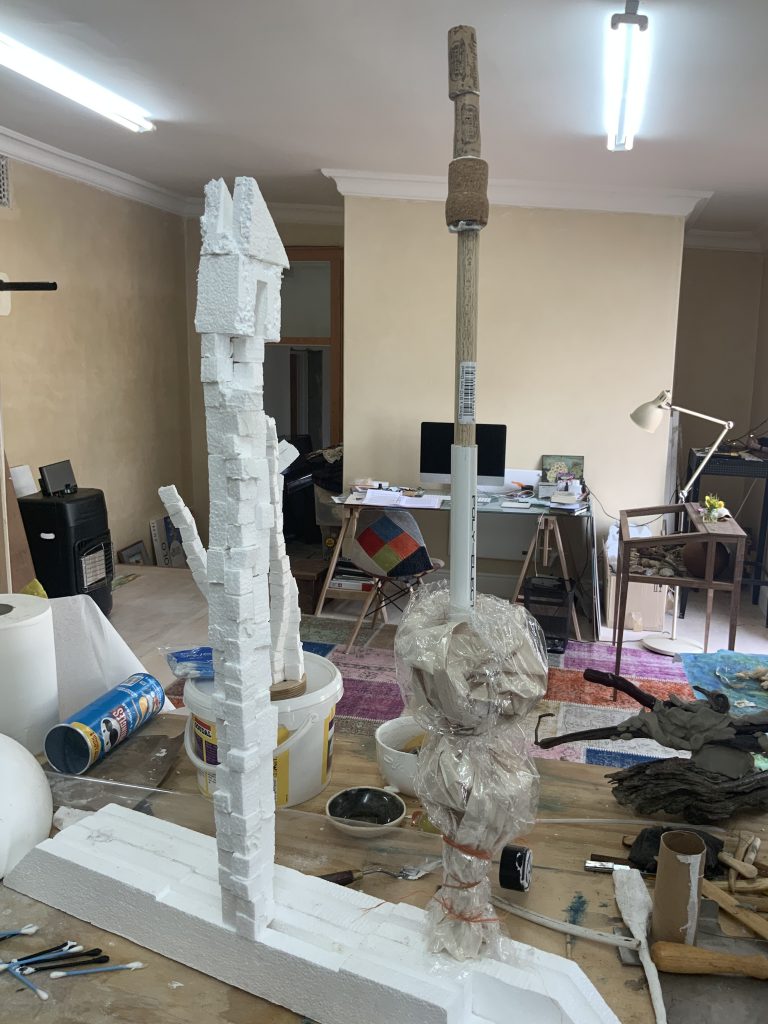
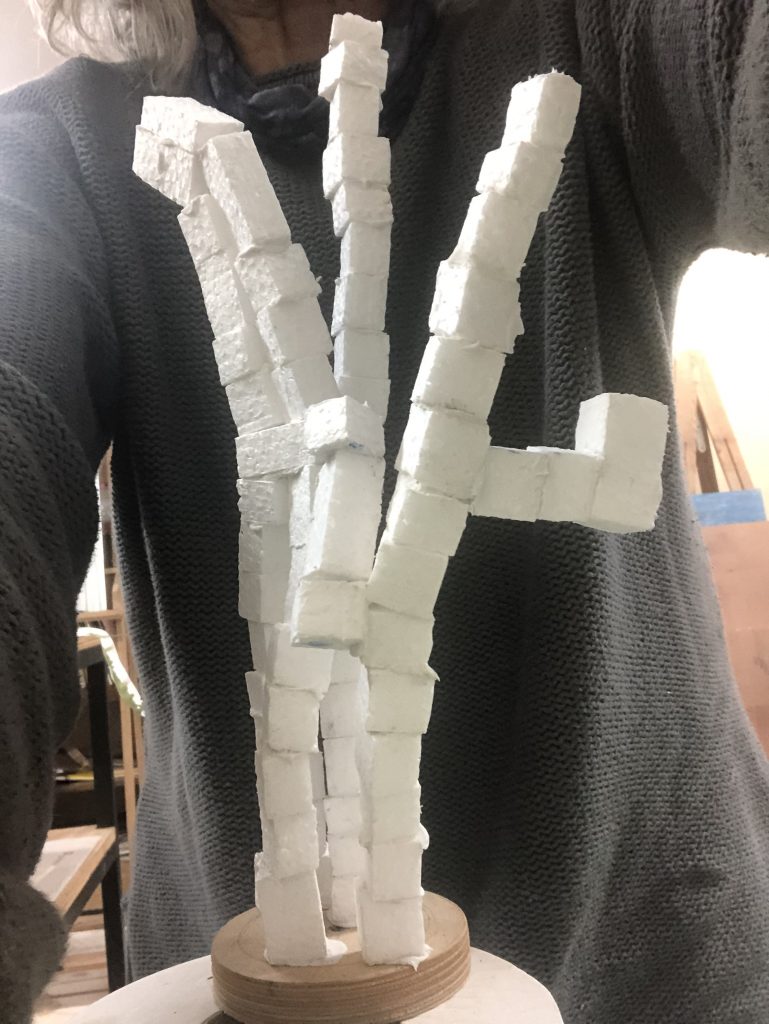
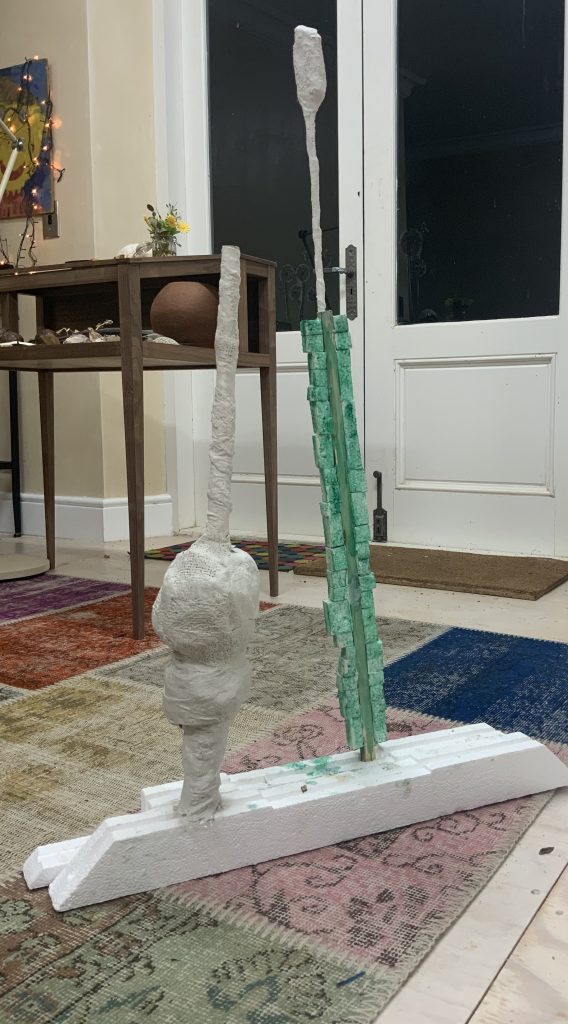
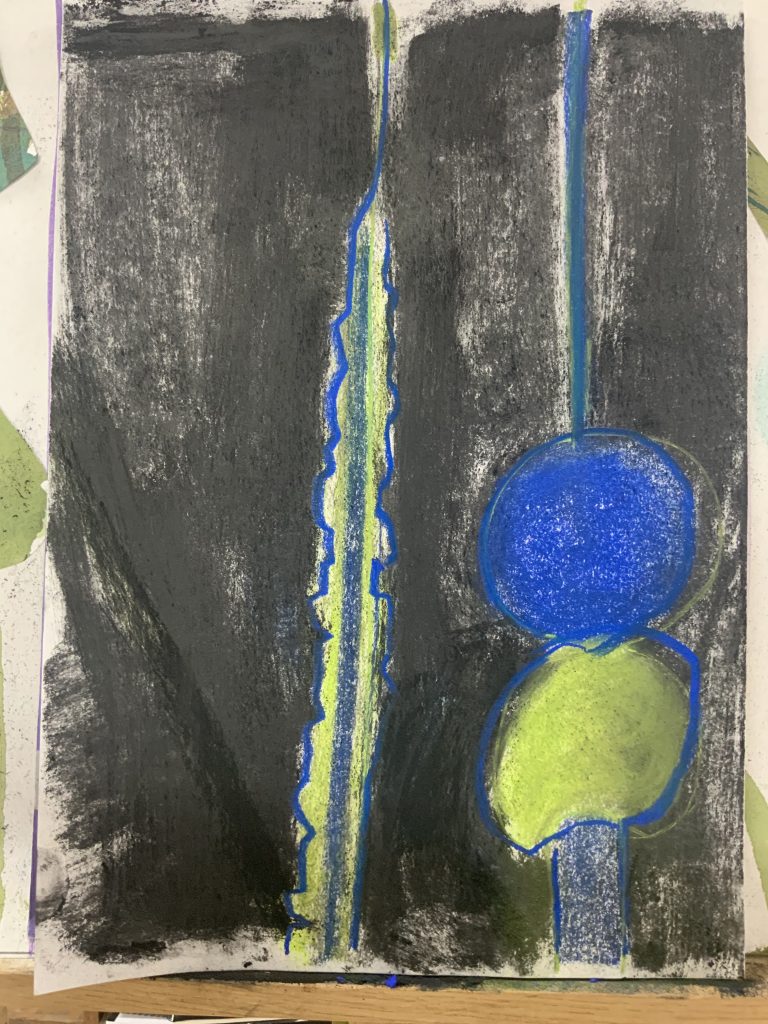
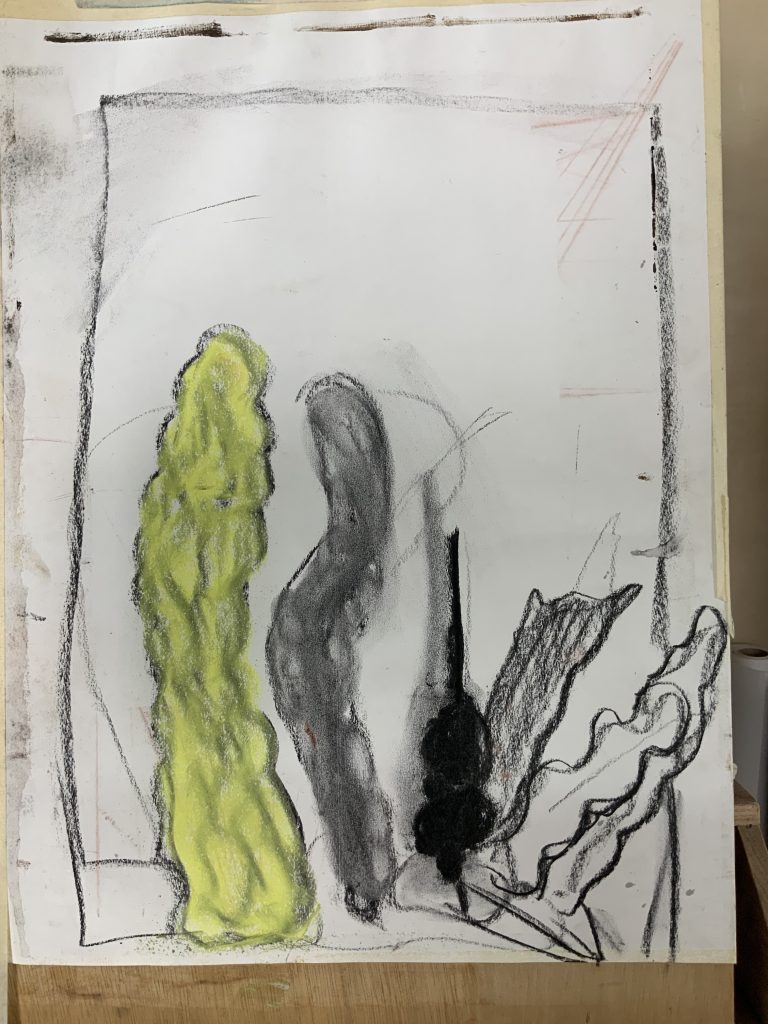
I became more enthusiastic to work with more materials in these works and bought a builders product with which cracks and gaps are filled – it is an expanding foam material. I wanted to fill a piece of clothing in order to create a form similar to my gestural mark-making as well as add it on and around the piece I made with polystyrene. I jumped into the project in a hurry and did not realize it will be sticky and the table I worked on, was not the best choice to work on. I should have cleared the table, but the foam product stuck to the painted paper cover on the table, and eventually, it tore the paper as I attempted to remove it from the table. It cured faster than I expected and the stickiness made it difficult to manipulate. The product started dripping/falling from the objects, as I wanted it to pile up onto it, and did not adhere as I expected. I think I should have worked slower and built up the layers and in this way connect the objects to each other in a physical way. It does look a lot like things are falling apart! By drawing them, I feel I show objects and not so much the working and making – it becomes clear I can play with my imagination in these drawings and use Phillida Barlow as inspiration.

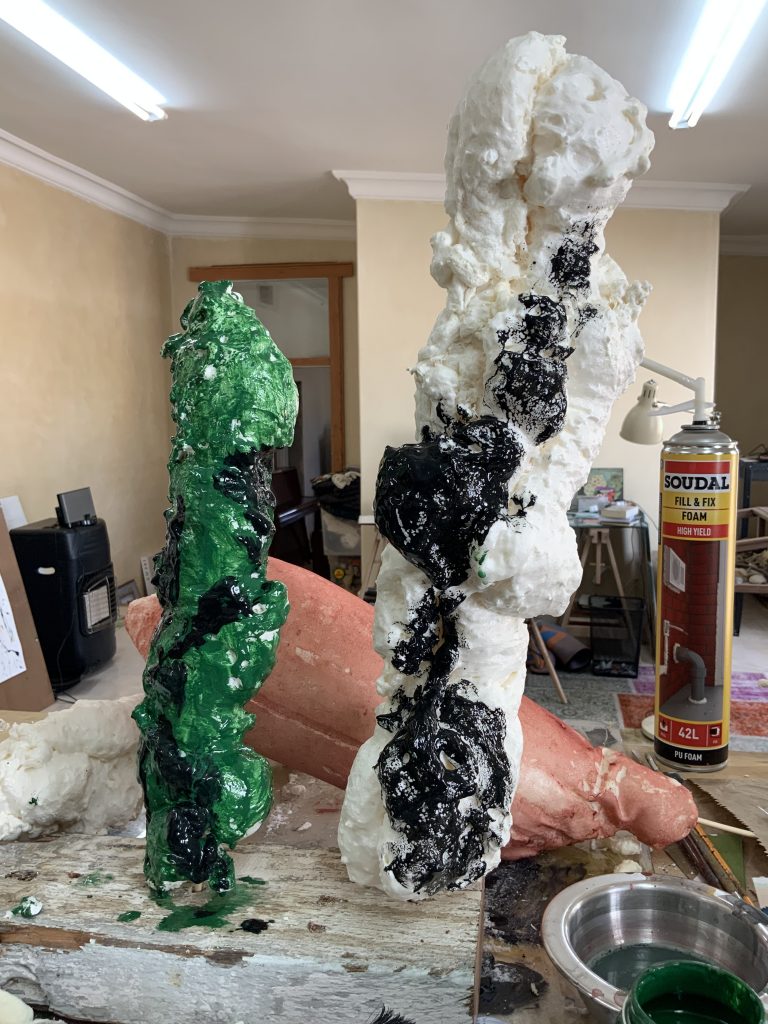
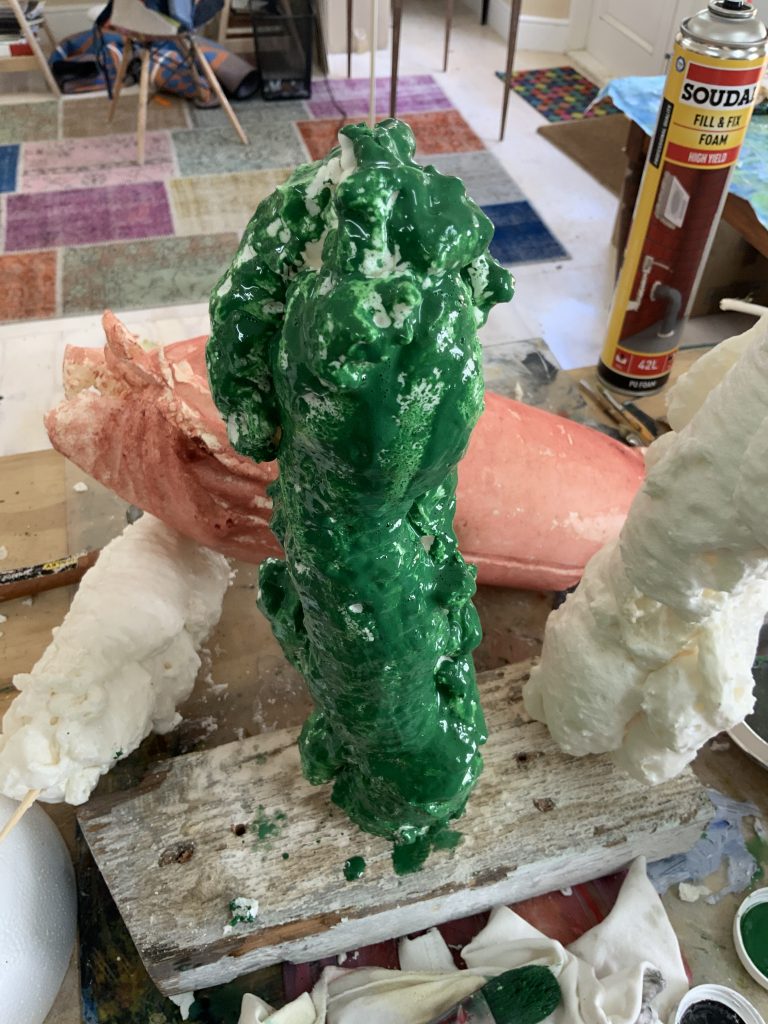
I looked at early drawings, collages, and paintings of Phyllida Barlow in the ’70s and saw them as form and colour studies, and read that she draws before, during, and after creating her sculptures. This is a means to develop within the working process, but also how she visualizes ideas which are then translated into three dimensions. She works with pencil, pastel, acrylic, and watercolour, and her mark-making is spontaneous as well as deliberate, bold, and vibrant at once.
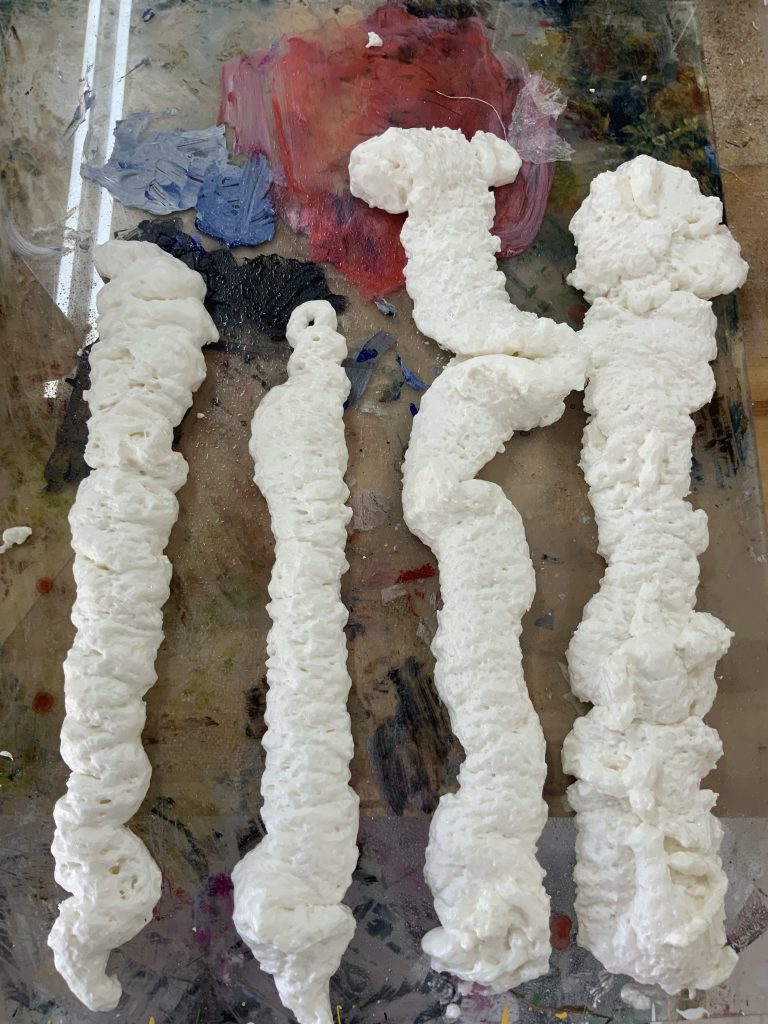
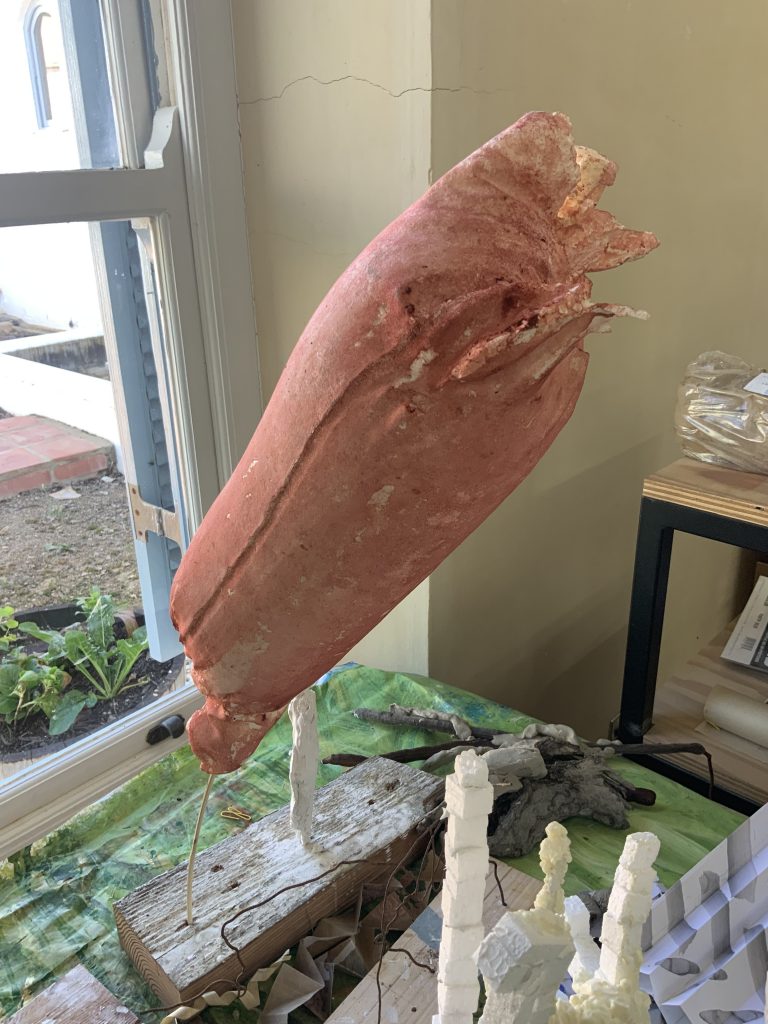
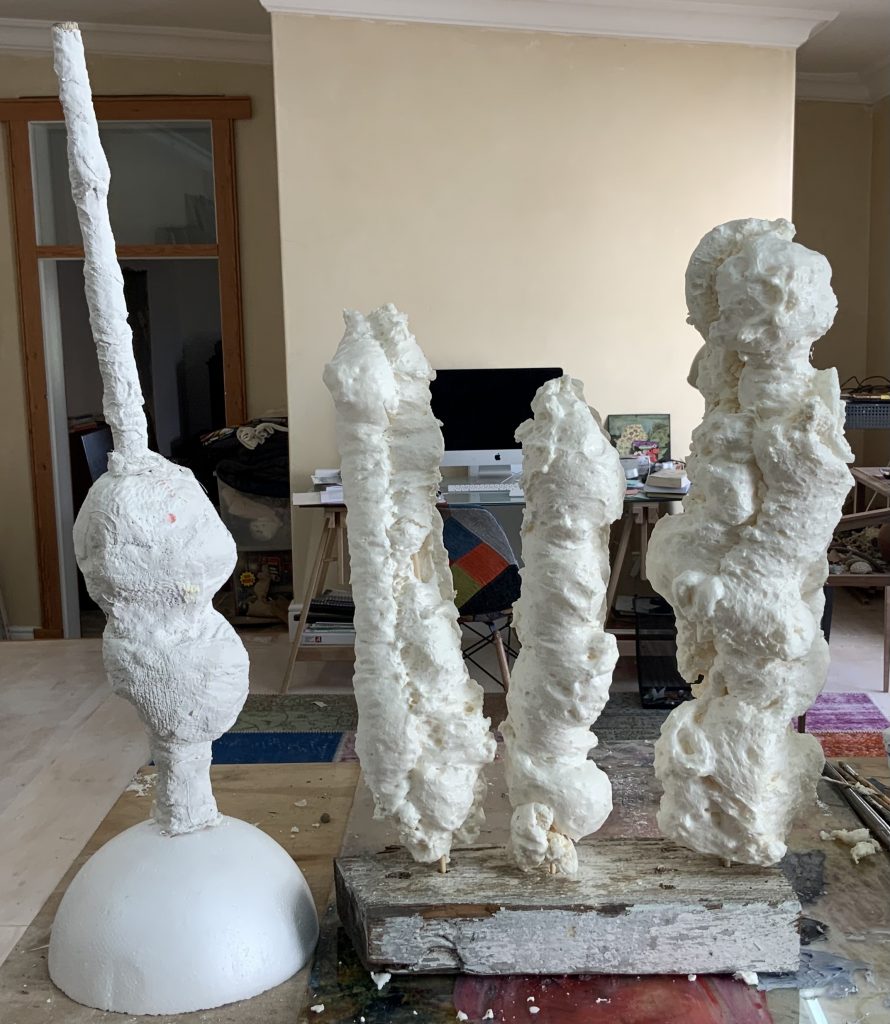
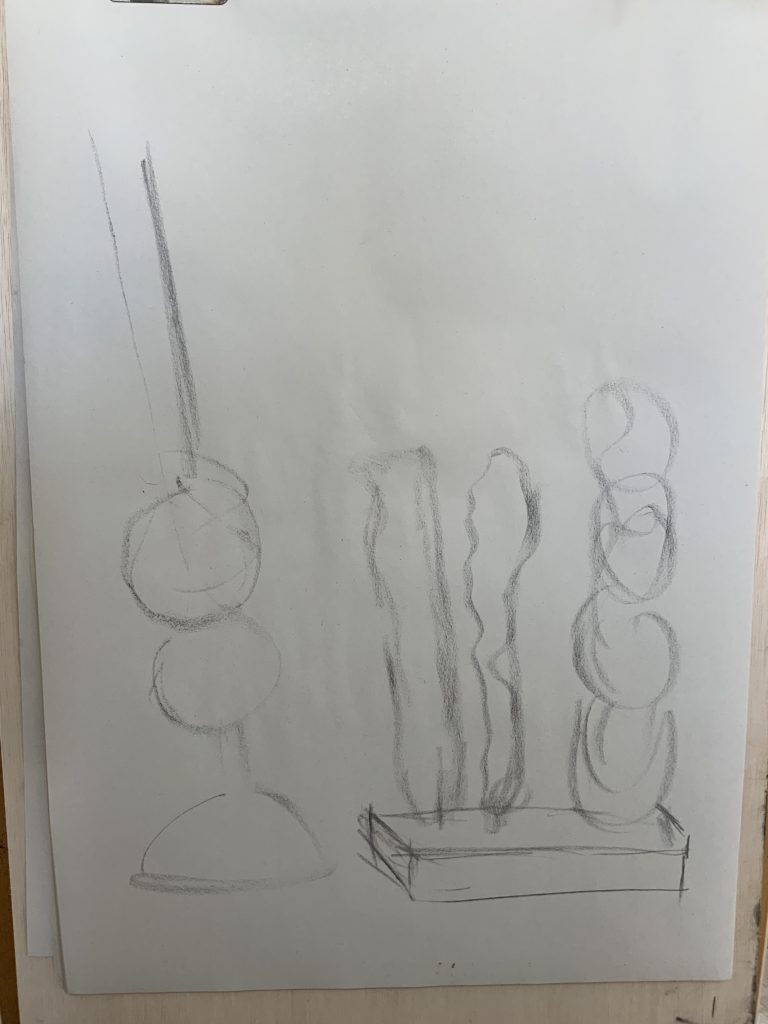
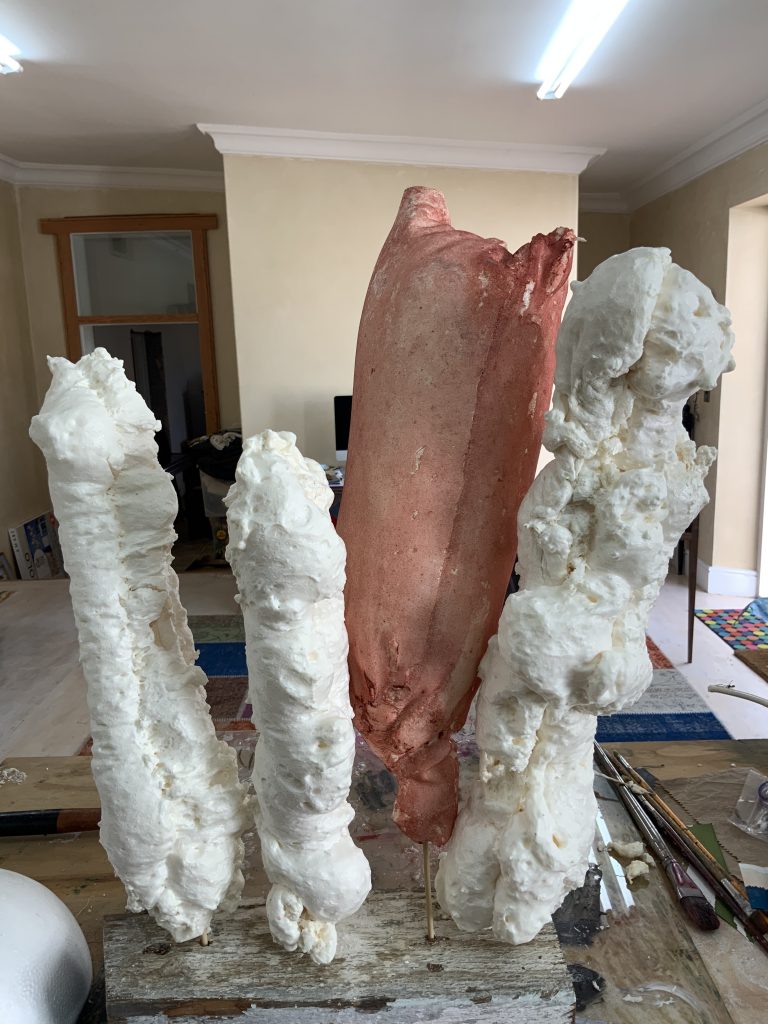
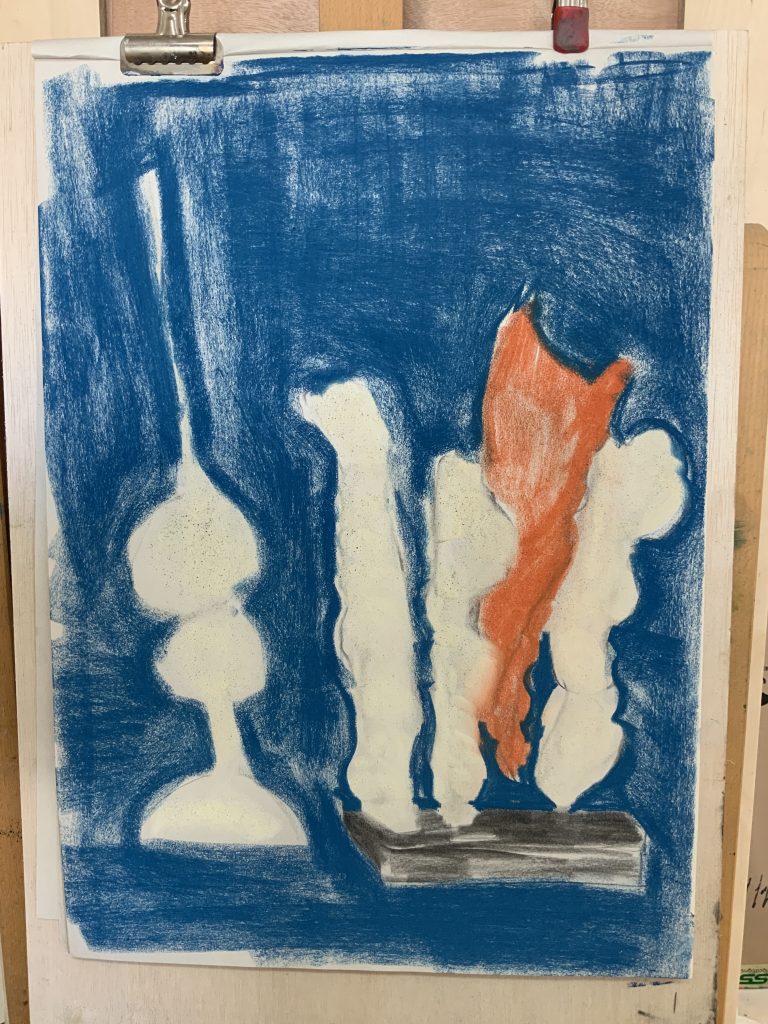
The objects are long lines, mark-making images. The objects were made in layers, turning them around when dry and then spraying more of the foam onto the object. The colour palette is yellow, green, black, and grey, on white paper. I toned down the colour of my objects to fit with the drip painting. I use craft paints diluted with water to paint onto the objects – their form makes even strokes difficult and I wish I could just dip them into the paint. I use thicker enamel paint on the grey object. My colour studies with pastels (above) help me to create space around the objects and to consider the use of a painting for the final work. I am thinking about a gestural painting I did in the previous part, throwing paint and how my objects can link to that work. I am also asking if these works need higher pedestals, or should be connected to the wall with brackets – they cannot stand on their own.
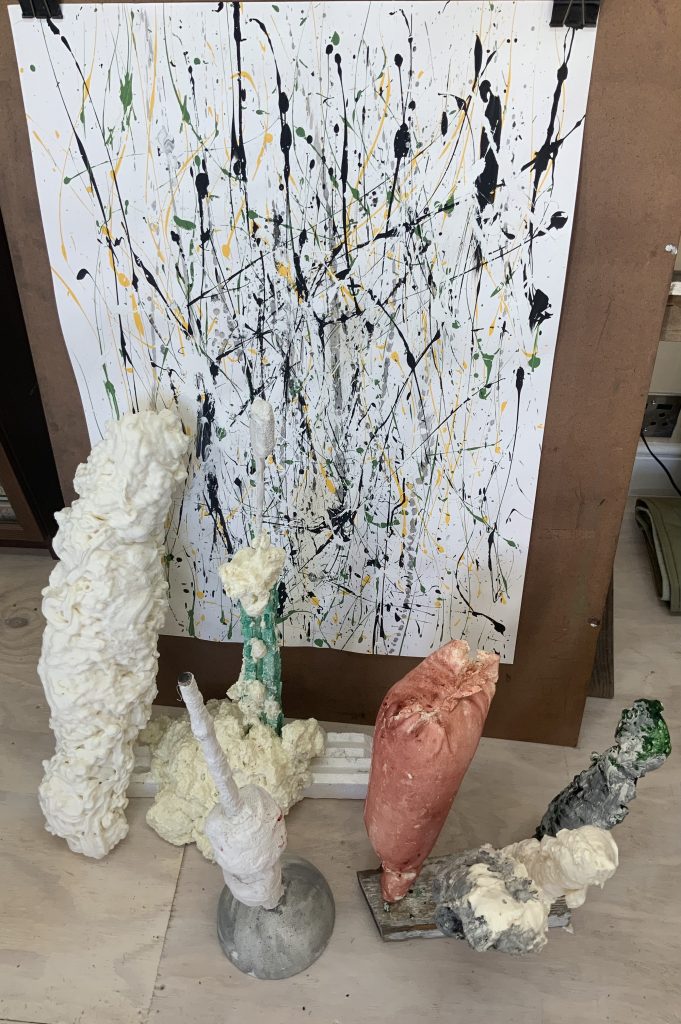
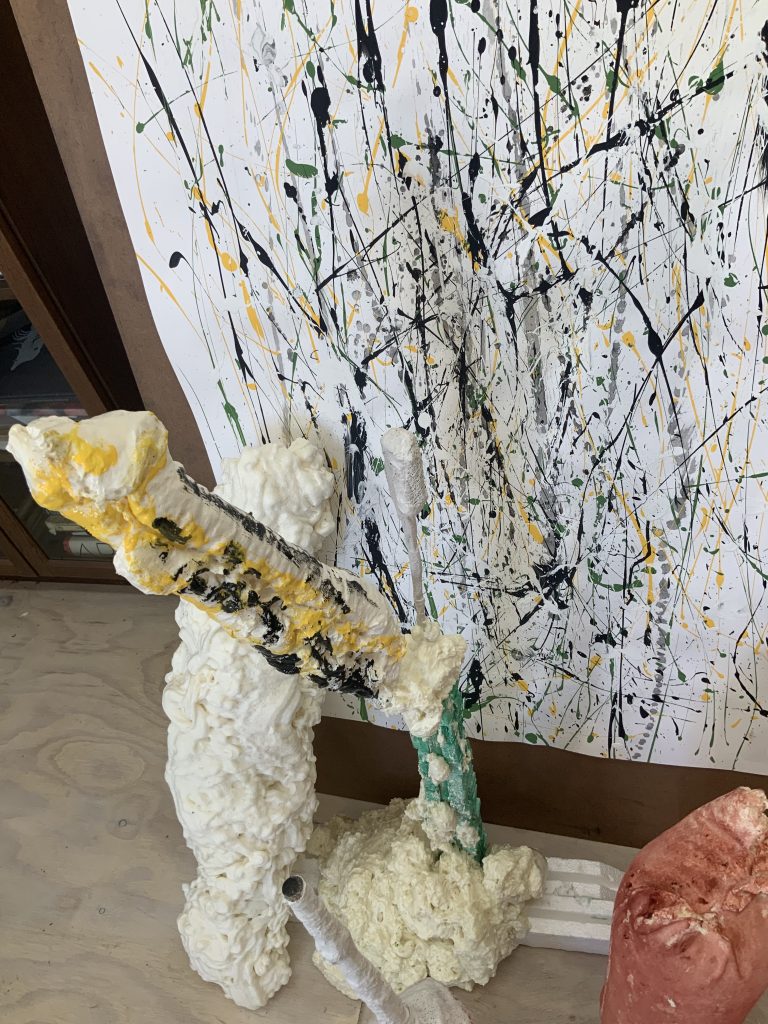
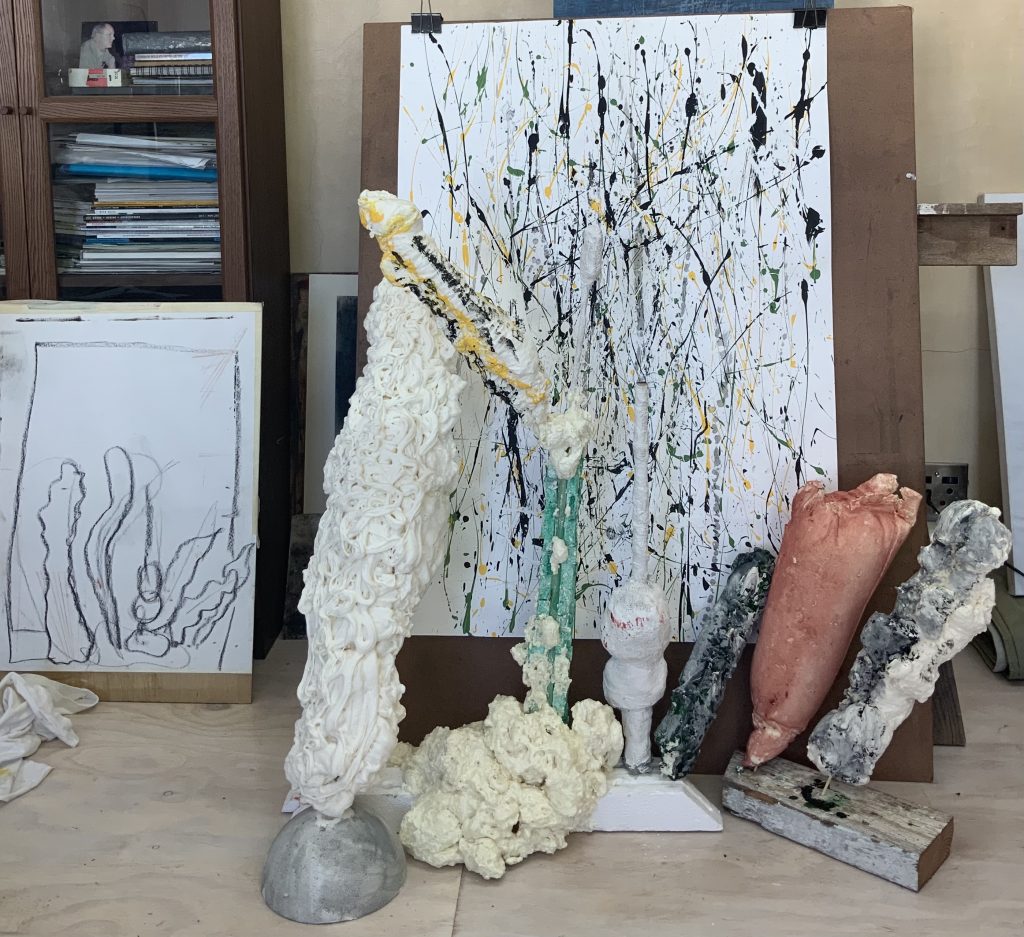
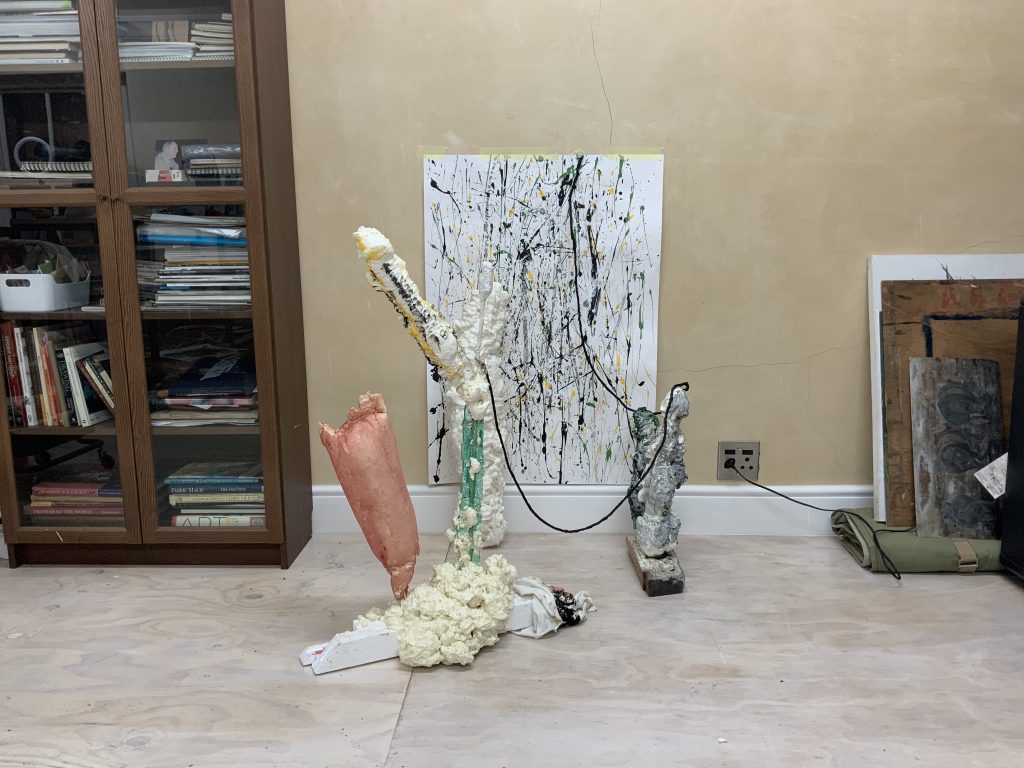

I dipped rope in black paint and will be considering this as a way of connecting the work with the painting – like the lines in the painting. I hung the painted rope in a tree outside my studio and this also made me consider if I could suspend my objects outside. The background is the farmstead, the fields, and the sky around. I love the idea to place this work in this space. In a way, it reminds me of Jessica Stockholder’s work in a garden in Andover, Belgium. Can the work become more coherent? I will paint more ideas around these objects and focus on the form and colour of the work. I continue thinking about how the work can be constructed and decide to use more rope -bringing yellow and green into the work. I use a cleared area against a wall in my studio where I play with the space and edges of the work. I am looking at how I can use the space and imagine walking around it and how I will experience the objects in this space. The rope lines can help define boundaries between the objects as well as connect the whole. I added the cloth I used to form the pink-coloured shape, as it was part of the making.
Reflection
I became aware that I am using some form of weaving pattern and when I thought more about my making: I made a mixed media work in which I consider these ideas as part of my experience and decision-making process. I feel that the lines I draw connect to the work and that the objects become part of the actions of painting – to throw, to mould, to suspend, to drop, to drip…..

In some ways, some of the made objects remind me of soft pillows -different sizes, or a soft serve ice cream machine that went wrong and just kept spitting out the ice cream from inside. I wonder if the fact that what is, does not matter, is what makes me uncomfortable about the objects. I try out many compositions and prefer the ones where the objects are connected by the rope back into the drawing. I realize my imagination can take this to many places. I think it is important to consider my own capacities and try and work with them (make good use of it – the importance of skill and knowledge comes to the front as something I could discuss with my tutor. I feel whilst making I was more inside and around the work, now I have to look at it.

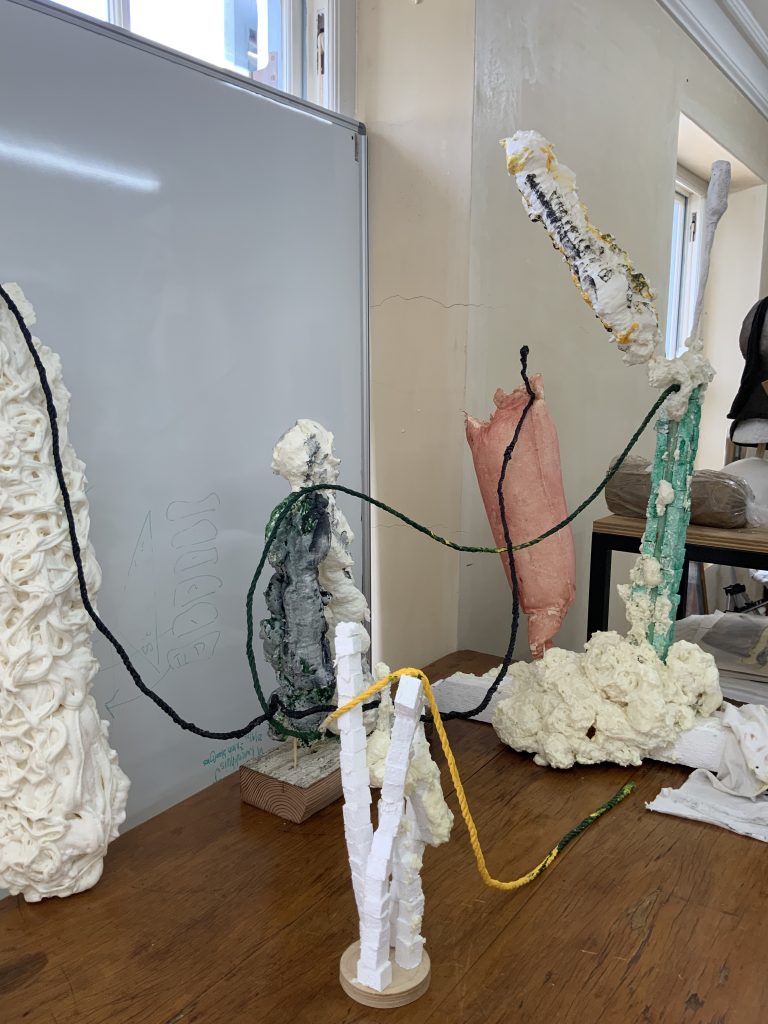
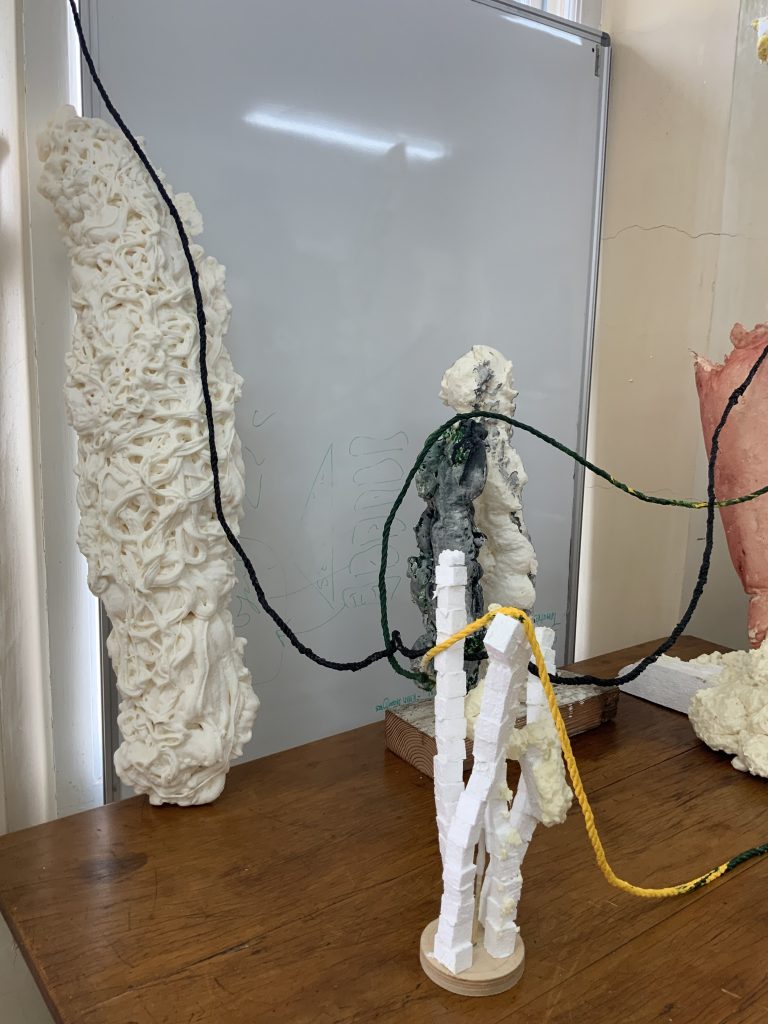
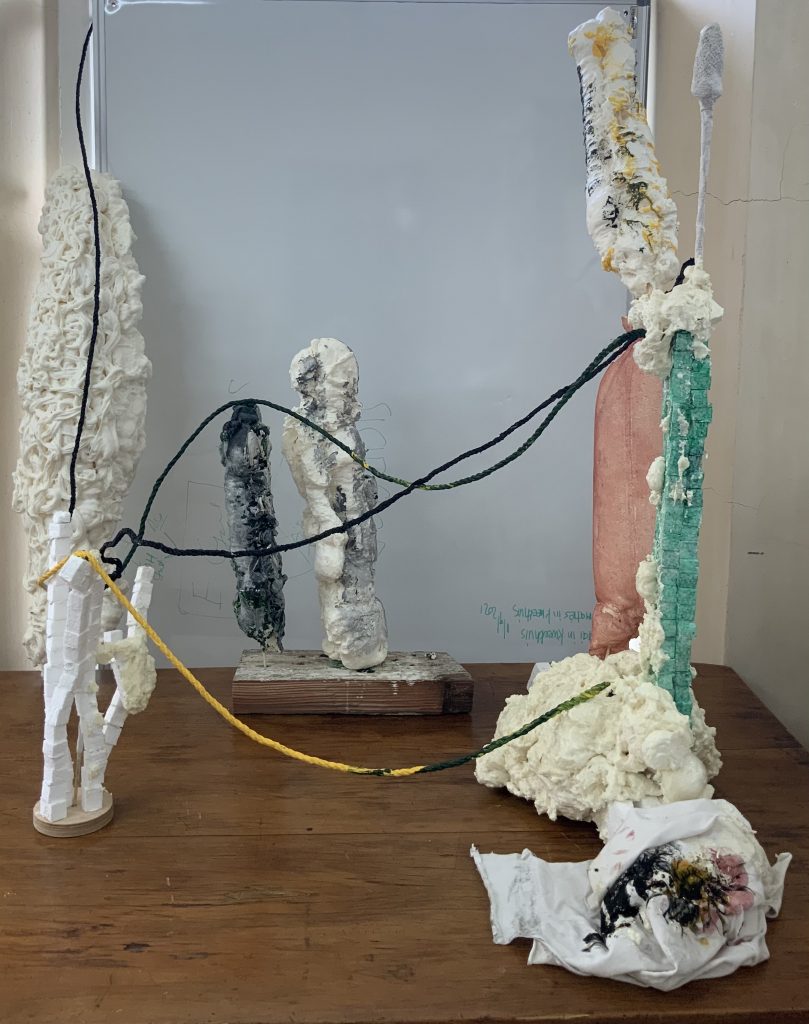


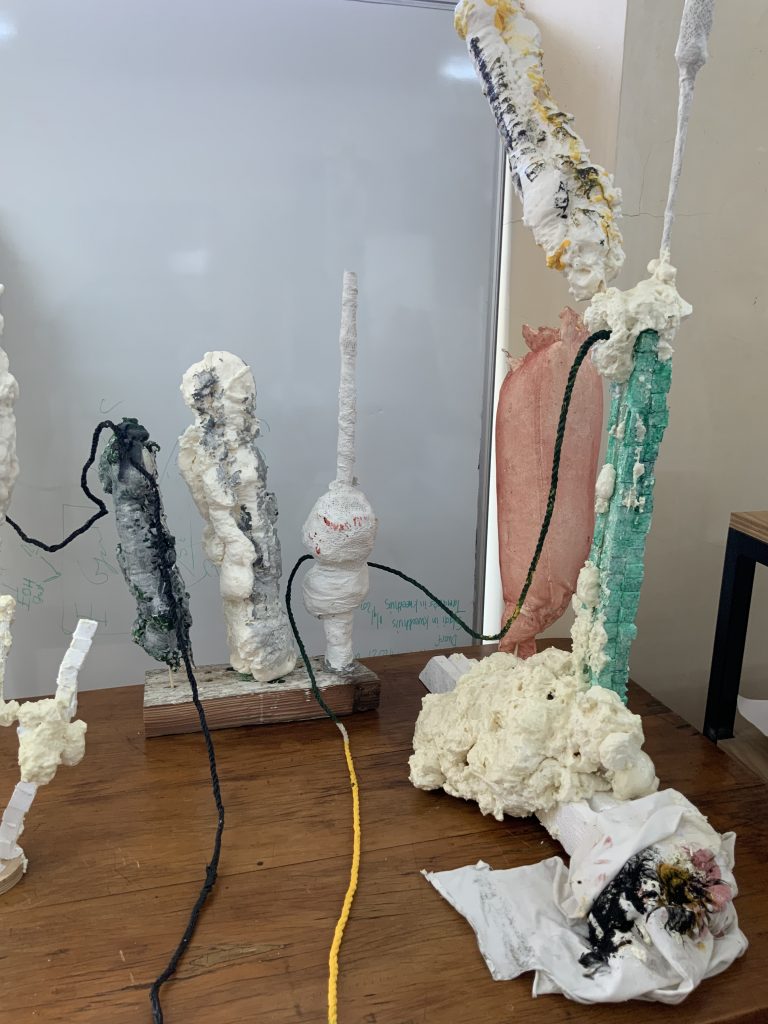

Whilst busy with the process of making I did come to a place of discomfort – I had to look at how I work, think, and generally operate in this new place where making is taking place. There was enjoyment of the playfulness and experimenting, learning to cope with mistakes, but also questions about what skills am I learning, and how I can apply this during the course. I took many photos and started wondering why I suddenly feel that the work has now become more about curating or composing it in a proper or best way, than about the different canvases I created and painted on. I finally choose to place the work on the table where everything started. I like the lines of rope moving out of the space, hanging over the table.
After my tutorial session, I wanted to come back to this work. My tutor suggested that I look at the work of artist, Ian Kiaer and consider how the work, figure 6.32, above, could relate to the final piece. I consider the properties of the objects and understand her insight into the objects I represented in the painting, (figure 6.32) I am interested in this place of knowing what only happens when one spends time with objects and their narrative which runs like connected threads in your work. I acknowledge the importance of time passing to process this. On the Tate website, I read that these connections, which they refer to as “links” are intuitive rather than academic. This artist understands that by layering references and leaping across centuries of art history he is able to generate new relationships between complex ideas and individuals. I see this visual coherence I presume my tutor wants me to understand and explore in my own making. I see that the painting can bring the curios/odd forms back into the reality where I started off with looking at mark making and bringing it into a relationship with 3d form/sculpture.
Kiaer uses tone and colour in his works in a very subtle way. I need to work confident in this place – I have to admit that my confidence started to fail me – the choice to leave it resolved at the point where I made the decision was very much based on this place of uncertainty, but still a lot was going on in my mind and difficult to give words and expression to. It is as if the conversation with my tutor, opened this up. I do think this touches on the edges of the piece – which I did not particularly achieve. I was also encouraged to look at the writing of Tim Ingold and Materiality, documents of Contemporary Art – here to look at Petra Lange-Berndt. I find this as an interesting idea to develop contextually in my parallel project or the Critical Review.
LIST OF ILLUSTRATIONS
BIBLIOGRAPHY